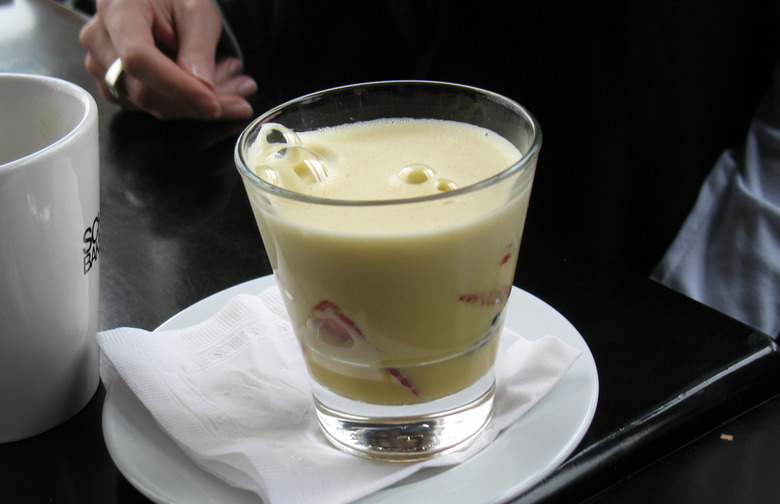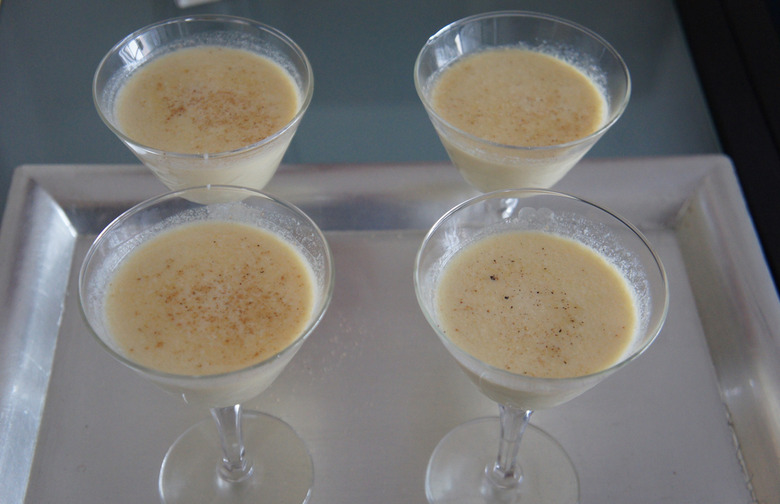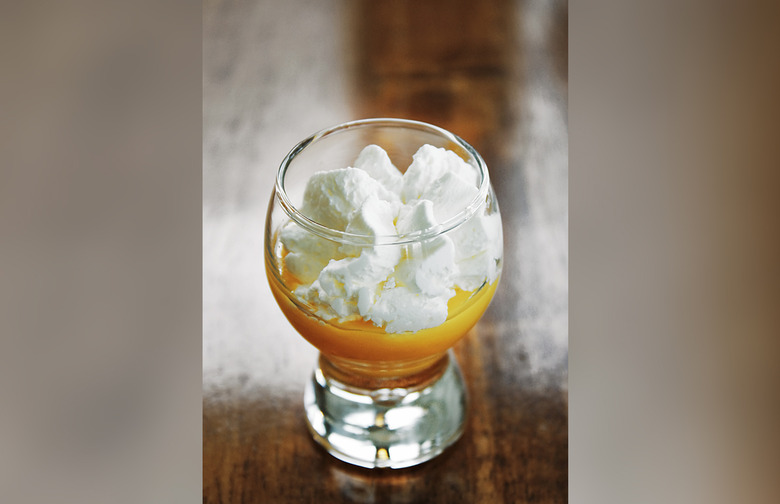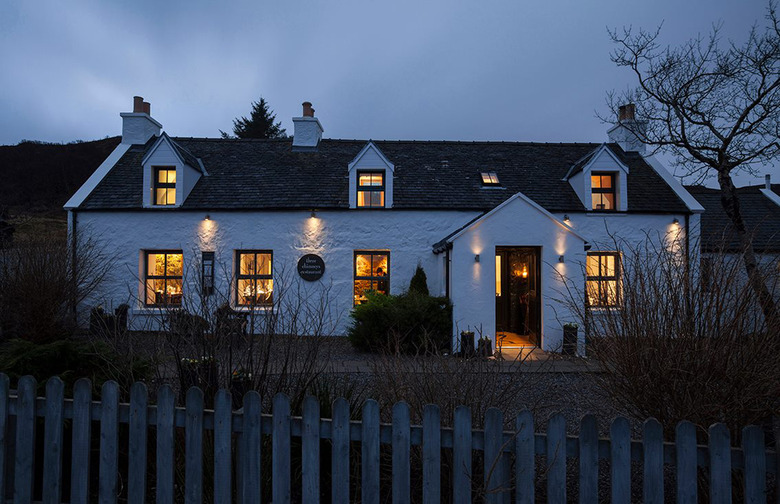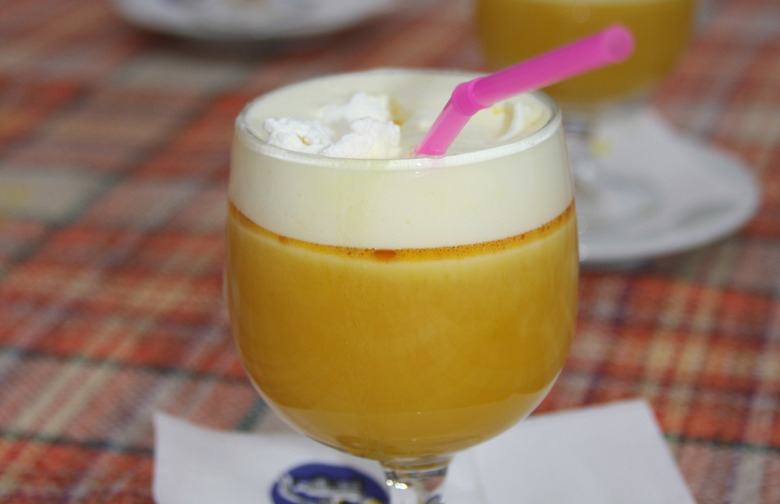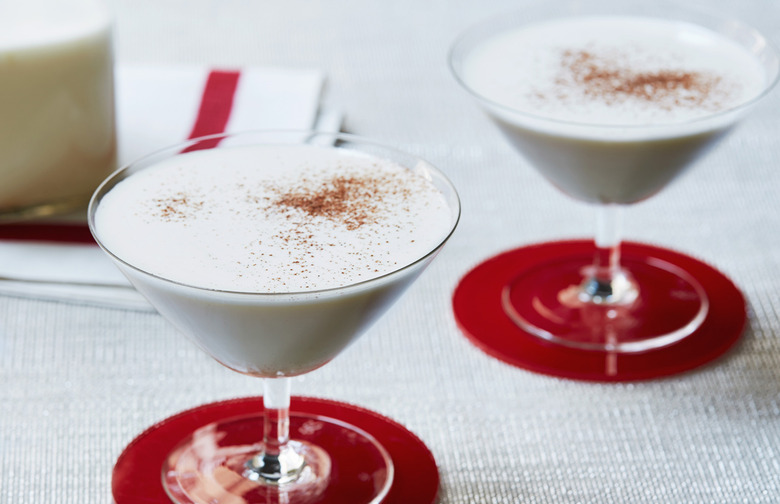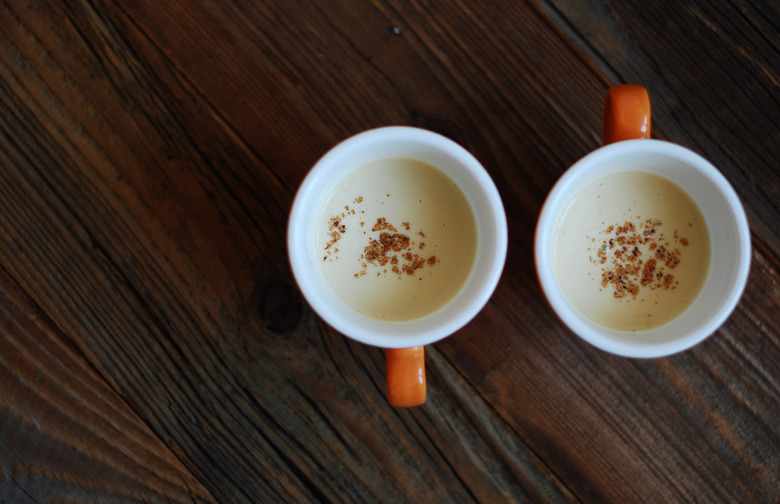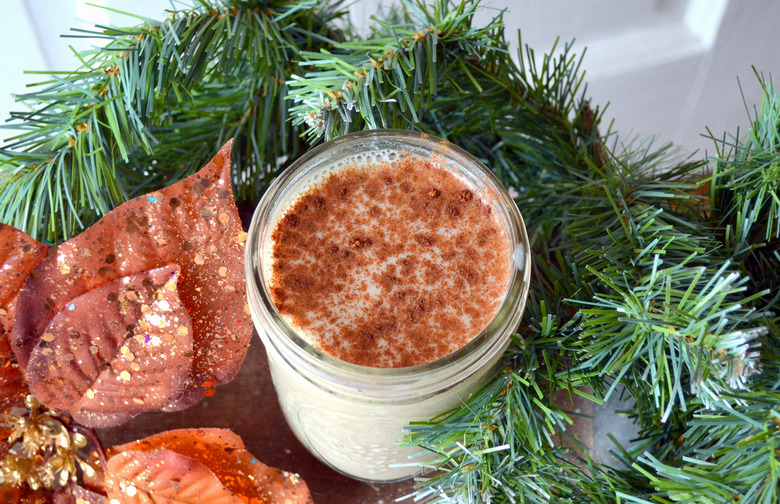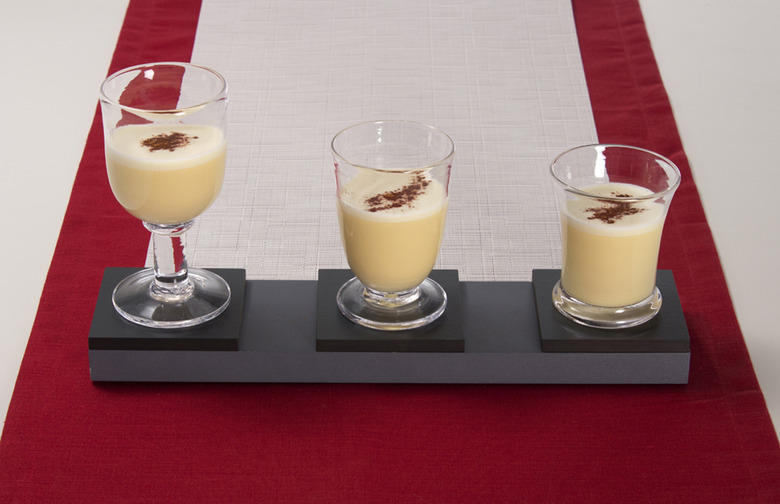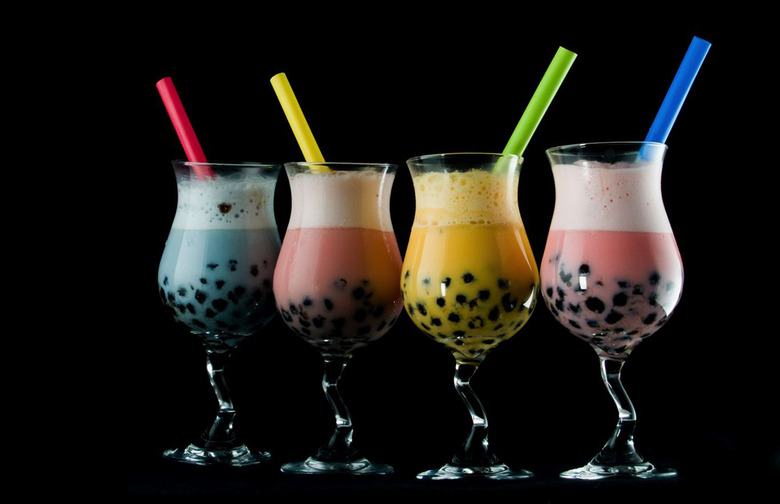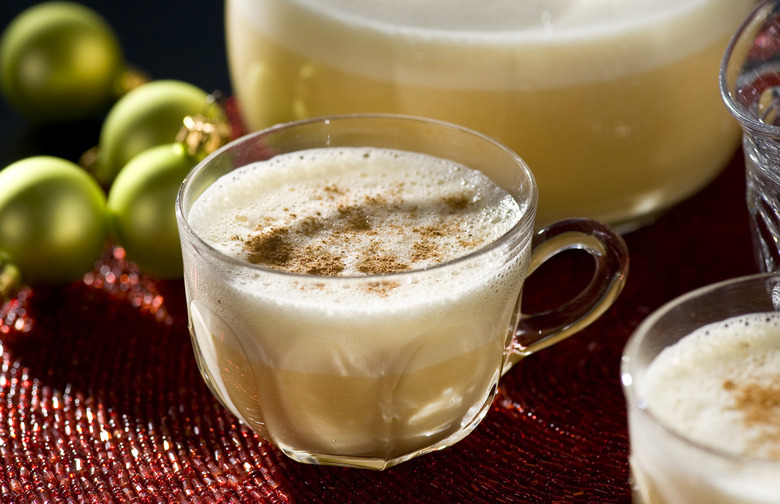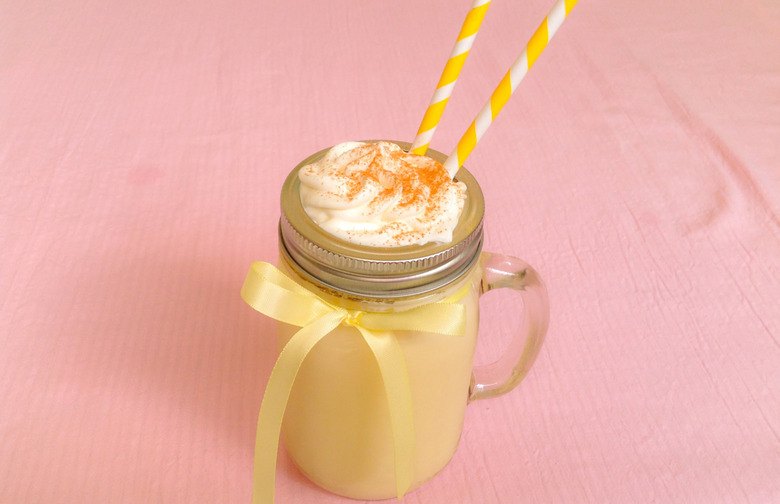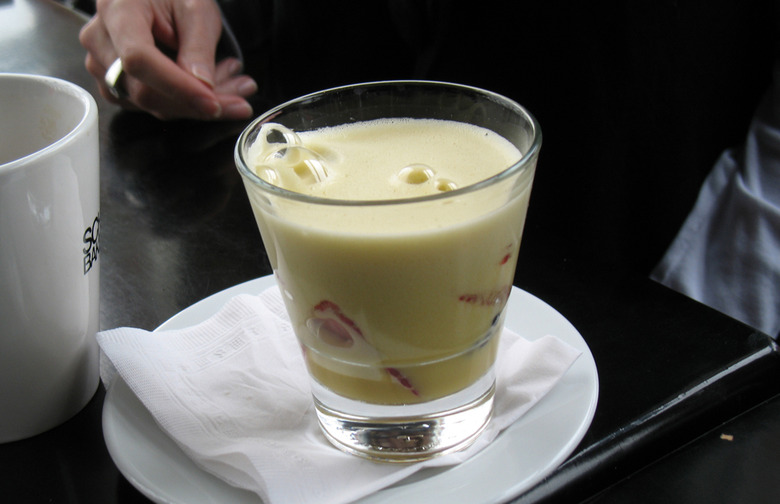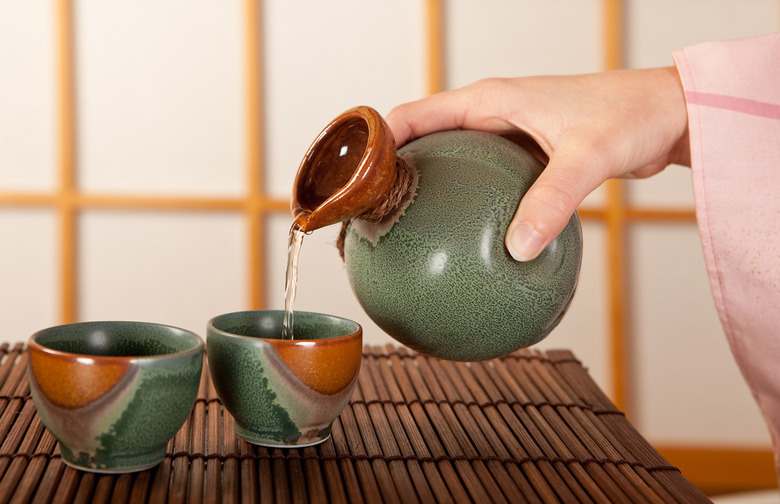16 Types Of Eggnog From Around The World Slideshow
The holiday season is, for most, no time for dieting. Granted, some winter sports enthusiasts might argue they burn off those excess calories on the slopes. But, for most of us, November and December are months of indulgence. Even the most well-intentioned wellness plan goes out the snow-frosted window when elaborate cheese trays and platters of festively frosted cookies come rolling in.
And then, of course, there's eggnog: that heavy, heady concoction that is served but once a year. Historians trace its rich roots to in thirteenth-century England, when medieval drinkers curdled hot milk in spiced ale and called it posset. Monks included eggs and figs in their version of posset, and people also toasted to good fortune and health with the drink. It gradually went out of fashion until the colonization of the Americas in the 1700s, when small-scale farms with cows and chickens aplenty gave everyday imbibers the chance to sample the drink. The cheap and plentiful rum there also made it into the recipe. Even George Washington was a proponent of the drink and made it with three different types of alcohol: rum, rye whiskey, and sherry.
Now, eggnog is an American holiday tradition on par with exchanging gifts, decorating trees, and visiting estranged relatives. Recipe variations span regional, generational, and even familial lines. Eggs or heavy cream? Brandy or rum? Nutmeg or cinnamon? Whatever your pleasure, the creamy cocktail is undoubtedly a crowd-pleaser.
It should come as no surprise, then, that variations on the drink are enjoyed from Scotland to Japan. Read below for 16 versions of the holiday favorite.
Additional reporting by Emily Saladino.
Æggekop (Denmark)
This Danish drink is made with milk, whiskey, whipping cream, and rum or brandy. It also employs beaten stiff egg whites that are folded into the mixture. It should be chilled for at least three hours or overnight before enjoying.
Advocaat (The Netherlands)
Holland's holiday spirit is so strong that some versions have to be eaten with a spoon. Dutch advocaat combines brandy or cognac with sugar, fresh vanilla, and a sinfully large quantity of egg yolks. Bottled varieties by Bols or De Kuyper are widely distributed and available internationally, but the advocaat is made fresh, topped with whipped cream and cocoa, and enjoyed immediately. For a taste of Dutch decadence alongside the Amstel River, grab a glass at Freddy's Bar at the chic Hotel De L'Europe in Amsterdam.
Auld Man’s Milk (Scotland)
While Christmas is celebrated throughout Scotland, the bigger holiday is New Year's Eve's epic Hogmanay. Late-night revelry includes everything from baking shortcake to drinking with neighbors, so the January 1 "morning cup" is suitably substantial. Named Auld Man's Milk after native son Robert Burns' seasonal anthem "Auld Lang Syne," the dram combines whisky and sweetened cream with whipped, separated eggs. Chef Michael Smith of the Highlands' Three Chimneys serves his family-style, with a half-pint of whisky and a thin slice of lemon peel. Slàinte!
Bombardino (Italy)
In the 1970s, the après-ski set on the chic slopes of northwestern Italy created the bombardino, a bold pairing of Dutch advocaat liqueur (or its marsala-infused Italian cousins, VOV or Zabov) with brandy or whiskey. Served warm and topped with whipped cream, it's a hearty, heady way to beat the winter chill. At Valle d'Aosta's sweeping Hermitage Hotel & Spa, Alpine skiers sip bombardini at the base of the Matterhorn. Those looking to put an extra spring in their step can add a shot of espresso by ordering a Calimero, named for a hapless, hyper Italian cartoon character. Don't say we didn't warn you.
Chilled Camel’s Milk (United Arab Emirates)
Although their version is nonalcoholic, Emiratis can teach the world a thing or two about eggnog. Throughout the UAE, chilled camel's milk is blended with pitted dates in a surprisingly healthy take on the hearty beverage. In keeping with Arab hospitality, the date drink is often offered as a welcome beverage to houseguests throughout the year. At Abu Dhabi's luxe desert resort Qasr Al Sarab, it's lightly sweetened with local honey and presented to guests upon arrival.
Cola de Mono (Chile)
Named for former Chilean president Pedro "Monkey" Montt, Chile's spirited holiday beverage combines coffee, milk, and pisco. Called cola de mono (translation: "monkey's tail"), the festive drink is served chilled to combat warm December temperatures. Those heading to the Southern Hemisphere should hit Valparaíso's new Palacio Astoreca, a national landmark-turned-boutique hotel with a restaurant by an elBulli alum. Chef Sergio Barroso serves a killer cola de mono made with local tonka beans, star anise, and an elegant, semi-frozen coffee "cloud."
Coquito (Puerto Rico)
Coconuts figure prominently in Puerto Rican desserts, from tembleque, a creamy coconut pudding, to candied coconut rice. It comes as no surprise, then, that Puerto Rican eggnog, or coquito, uses coconuts to brilliant, boozy effect. Bar chefs combine coconut extract and cream of coconut with condensed milk, evaporated milk, white rum (such as la isla bonita's own DonQ) plus a smattering of cinnamon, cloves and nutmeg. Some swap out rum for brandy, some add coconut rum as well, and some use a combination of all three. Coquito is served on ice throughout the island; travelers in the beachfront Condado region of San Juan can sample it at the San Juan Marriot Resort & Stellaris Casino, or at the sleek bar of the design-centric La Concha Resort.
Crème de Vie (Cuba)
Cuba's variation on eggnog, called "the cream of life" in English (Cubans commonly use the French, not Spanish, form of the name), is made with sugar, egg yolks, vanilla extract, and white rum, and it's garnished with ground nutmeg. It's a Christmas tradition enjoyed with family.
Eggnog (United States)
Like blueberries and the NFL, eggnog is an utterly American affair. Its origins can potentially be traced to medieval English grog, but the modern egg-and-cream version is spiced and spiked to perfection across the U.S. The Victorian Ocean House resort in Rhode Island hosts an annual eggnog competition, and at the Montage Laguna Beach, sommelier Troy Smith and chef Casey Overton serve the Nog Grog cocktail with Southern Comfort and Godiva white chocolate liqueur. It's a sweet, celebratory taste of American ingenuity.
Eierlikör (Germany)
Some say this German egg liqueur evolved from "abacate," a drink made by indigenous people in the Amazon rainforest and appropriated by seventeenth-century European explorers. It calls for rum, grain alcohol, or cognac, and other ingredients include milk, cream, and vanilla bean. The drink, which is available year-round but primarily enjoyed at Christmas and Easter, is stirred over low heat and chilled before it's served.
Jamaican Eggnog (Jamaica)
The island's top seasonal drink is a sweet fruit juice made from sorrel (which in Jamaica means hibiscus), ginger, and wine. But, given the depth and range of Jamaica's incredible rums, traditional rum nog is not forgotten. An island-centric cross between American eggnog and a White Russian cocktail, Jamaica's version combines local spirits like white rum and Tia Maria liqueur with cream, egg yolks, and locally grown cinnamon. At Kingston's sleek Spanish Court Hotel, chef Anthony Matthews uses Jamaican J. Wray and Nephew White Rum, plus a dash of Angostura bitters, to give his nog a kick that will last until the New Year.
Milk Tea (Taiwan)
Invented in Taichung teashops, milk tea, also called boba and bubble tea, is a Taiwanese institution. Flavored with fruit or milk, the filling, frothy beverage is served both hot and cold, and typically involves some combination of Taiwanese black tea, condensed milk, small tapioca pearls and honey. This winter, the swanky Regent Taipei serves a crowd-pleasing Ginger Taro Milk Tea. Regent's take turns milk tea into something of an Eastern eggnog, combining traditional milk tea with hearty, house-made taro mousse, a splash of ginger juice and a pinch of dark brown sugar. Hotel guests and locals alike sip the stuff throughout the holiday season, which here extends through January 31 for Chinese New Year.
Ponche de Leche (Ecuador)
As with Colombia's sabajón, aguardiente plays a starring role in Ecuadorian eggnog. The stiff spirit is mixed with sweetened condensed milk, orange peel, egg yolks and a dash of cream. It is usually served hot, and sometimes called rompope (though not to be confused with Mexico's variation on eggnog that goes by the same name.) Sample a classic version at Cafetería Modelo, an old-school café in Quito. One of the city's oldest eateries, it first opened in 1950 and remains popular with visitors as well as local Quiteños, who stop in for strong coffee and savory snacks like plantain empanadas and humitas, or corn-on-corn tamales.
Rompope (Mexico)
Mexico's version of eggnog, called rompope, evolved from Spanish ponche de huevo, or egg punch. It was reportedly first made in the seventeenth century by nuns at the Santa Clara convent in Puebla. Legend has it that one of the nuns, Sister Eduviges asked that the nuns be permitted to drink the rompope as well as make it, and she took one secret ingredient with her to the grave. The drink is made with almonds, egg yolks, cinnamon sticks, and vanilla extract, and it can be served warm or chilled over ice.
Sabajón (Colombia)
Aguardiente, which loosely translates to "firewater," is a spirit flavored with anise in Colombia, and it is not for the faint of heart. Locals sip it alongside a lager after a long day's work, or stir a few pours into juice for a potent tropical punch. During the holidays, aguardiente is mixed with sweetened milk to make sabajón, eggnog's Colombian cousin. Travelers can taste a decidedly upscale version at Cartagena's Hotel Tcherassi, where the swish Aquabar serves an elegant Sabajón Gin Fizz. It combines feijoa sabajón with milk, gin and fresh lime. It comes chilled and topped with a spritz of soda, to combat the sultry Cartagena heat.
Tamagozake (Japan)
Occasionally called "sake-nog" by Westerners, tamagozake is actually an uncommonly delicious Japanese home remedy for colds. A raw egg and pinch of sugar are continually whisked into warm sake until uniformly dissolved into a thick, creamy texture. Tamagozake can be served year-round but rarely appears on Japanese restaurant or bar menus, given its strong medicinal association.
